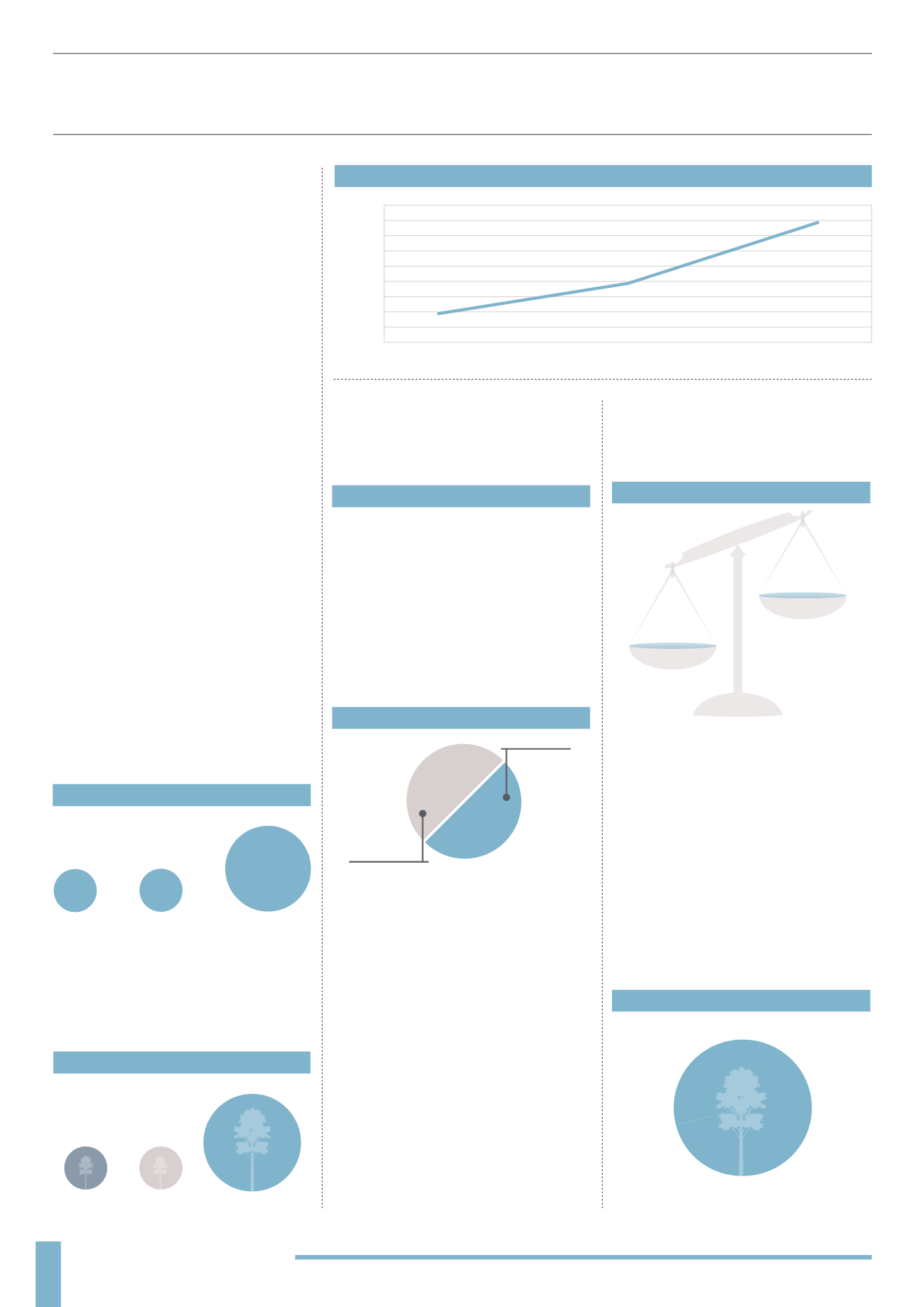
32
FINDINGSANDANALYSIS
CORPORATE ELEMENT
There are only 4 investments with a
corporate element structure available in
the forestry sector, with 3 currently open to
investment. These investments come from
4 separate providers and are currently
being marketed directly to retail investors
through a number of channels including
direct distribution and IFAs.
Investment structures include bonds,
timber batch purchase agreements and
the purchase of ordinary shares in special
purpose vehicles.
#1 LAUNCH YEARS
This is a relatively new form of forestry
investment with the first investment
product being launched to retail investors
in 2009, this product is still open for
investment. This type of structure has
increased in popularity since the 2008
financial crisis.
2013 saw 2 new product launches,
doubling the number of corporate element
investments in the sector. This sector remains
small due to the long-term nature of forestry
investment and the speculation surrounding
potential returns, often making it hard to fit
into a structured product.
SECTOR GROWTH
(2009 - 2013)
Number of Investments
0
1
2
3
4
2009
2011
2013
TREE SPECIES
(2014)
LOCATIONS
(2014)
NICARAGUA
GUYANA
BOLIVIA
BRAZIL
MINIMUM INVESTMENT
Highest Minimum
Investment Level
£ 10,500
Average
£
6,625
Lowest Minimum
Investment Level
£ 1,000
(2014)
RETURNS
(2014)
Variable
50%
Fixed
50%
LAUNCH YEARS
(2009 - 2013)
2009
1
2013
2
2011
1
#2 TREE SPECIES
As with directly held investments, teak
based products dominate the sector. This is
followed by bamboo and general forestry.
#3 LOCATION
All of the investments in the corporate
element sector are based in Central or
South America.
#4 RETURNS
Returns again vary widely with half of
investments offering fixed returns and the
other half offering variable returns. Returns
are generally paid annually in arrears and
can start as soon as one year after first
investing. The lowest return predicted per
year is 7.5%, rising to as high as 33%.
#5 MINIMUM INVESTMENT
Investments start from as low as £1,000.
The low minimum investment is achieved
due to the investment structures available,
with the investor loaning money or
purchasing equity, rather than directly
owning a specific asset. With an average
of £6,625 this form of forestry investment
may appeal to a wider range of investors
than directly held investments, who
want to allocate a small portion of their
investment portfolio to forestry.
#6 EXIT
Every investment offers a defined exit
strategy. This includes redemption of
the bond after a fixed period of time
or contractually agreed sale of timber.
Although these exits are contractually
agreed, they are by no means guaranteed.
The exit will rely on the investment
provider having the funds to repay the
investor at that point in time.
EXIT
(2014)
Teak
General
Forestry
Bamboo
(2014)
100%
Defined


